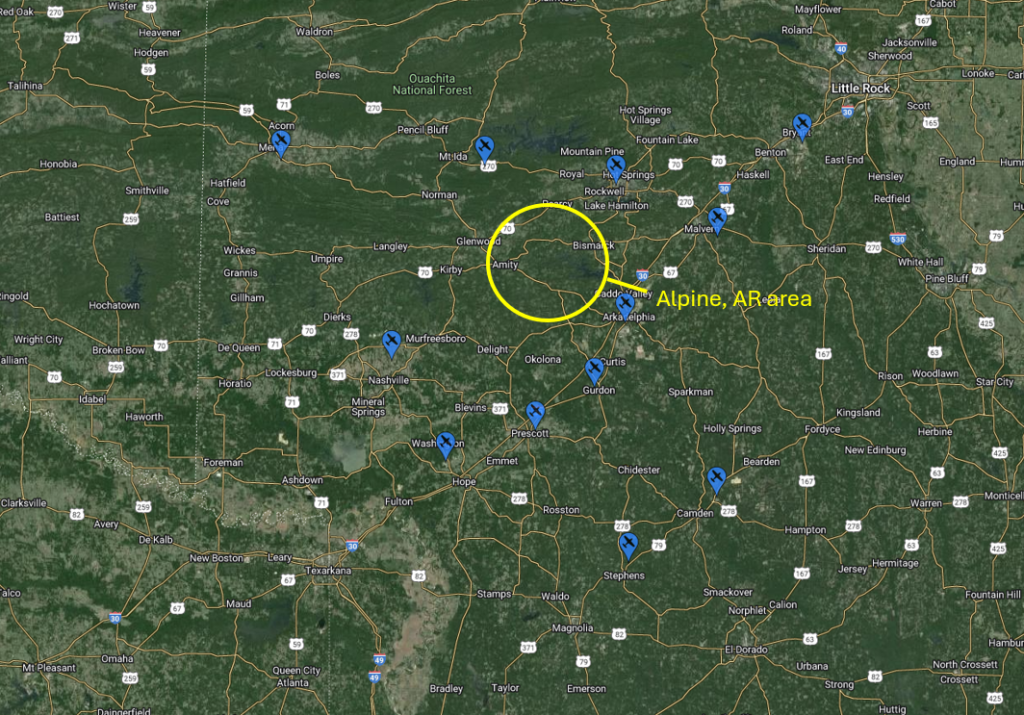FLYING LESSONS uses recent mishap reports to consider what might have contributed to accidents, so you can make better decisions if you face similar circumstances. In most cases design characteristics of a specific airplane have little direct bearing on the possible causes of aircraft accidents—but knowing how your airplane’s systems respond can make the difference in your success as the scenario unfolds. So apply these FLYING LESSONS to the specific airplane you fly. Verify all technical information before applying it to your aircraft or operation, with manufacturers’ data and recommendations taking precedence. You are pilot in command and are ultimately responsible for the decisions you make.
FLYING LESSONS is an independent product of MASTERY FLIGHT TRAINING, INC.

Pursue Mastery of Flight™
Thanks again to my incredible hosts and friends in the Australian Beechcraft Society and to all who provided such great welcome and hospitality to my wife and me on our recent trip. Direct subscribers received two Mastery of Flight reports the first two weeks I was Down Under. For readers who do not receive FLYING LESSONS by direct email those reports are now posted on my thomaspturner.com website and are also available in PDF here:
FLYING LESSONS for March 14, 2024
FLYING LESSONS for March 21, 2024
And now…
This week’s LESSONS:
An NTSB preliminary report newly posted this week opens a discussion:
…a Mooney M20E…sustained substantial damage when it was involved in an accident near Alpine, Arkansas. The pilot was not injured. According to the pilot, while in cruise flight in a gradual descent, the airplane’s two carbon monoxide (CO) detectors began alerting, and he felt symptoms of CO poisoning. The pilot closed the cabin vents, opened a small cockpit window, and attempted to open the door, but was unsuccessful.
The pilot decided to not continue the flight to the nearest airport; he shut down the engine and perform[ed] a forced landing to a field. During the forced landing, the airplane impacted unsuitable terrain and sustained substantial damage to the forward fuselage.
I do not criticize the pilot for making the decision he made. Perhaps the symptoms were intense and the pilot was concerned about passing out before he could make it to an airport. He was in a fairly remote area over hilly, rugged and heavily forested terrain, and he may have felt he needed to put it down before his performance degraded further under the CO threat. Circumstances may have made this the best option at the time—we don’t know. We do know that despite the terrain, the aircraft damage and the symptoms of carbon monoxide poisoning the pilot was not injured. I call that success.

The area where the Mooney pilot made his precautionary landing, southwest of Little Rock, Arkansas in the Ouachita Mountains
The LESSON this week is a question: Under what conditions would you elect to make a precautionary off-airport landing? A pilot medical issue, such as this case? Getting hemmed in by hazardous weather? A critically low fuel level? Partial, but not total, engine power loss?
Thinking about these things now—at zero airspeed, one G and low stress—will make it far easier to make the best possible decision in a survival situation under high stress, possibly with incomplete and contradictory information and potentially degraded decision-making skills.
Let’s get a discussion going. Other than total power loss, what would be a situation where you would consider making a precautionary off-airport landing? How will you decide under those conditions? How would you prepare yourself and your passengers for a precautionary landing? How can you better predict or avoid the threats?
Let us know at [email protected].

Debrief
Readers write about recent FLYING LESSONS:
Reader David Bowles writes about the March 28th Mastery of Flight on fuel management:
Good MoF, Tom. Reminds me of why in addition to those means of testing fuel level you mention, years ago I had an O&N aftermarket tank fuel level indicator installed in each tank of our [Cessna] T210. Red light comes on (other than in a turn) and I know I’ve got 7 gallons in that tank-time to get on the ground!
Some vintages of Cessna 210 have a checkered history of fuel tanks that appear full when fueled but don’t hold as much gas as placarded. Regardless, any fuel indicating system is valuable as a crosscheck against the others. Thank you, David.
Reader Lauren McGavran comments about the March 14th LESSONS on tailwind takeoffs and landings:
I would like to add another dimension (pun intended) to the discussion of wind vs. runway slope. A wind blowing over mountains is likely to have a significant downward component. What appears to be a nice, strong headwind for takeoff (uphill, towards the mountains) may have a strong enough downdraft to keep you from climbing like you expect or need. It will also affect your final approach for landing. I recommend mountain flying instruction for people who want to fly in the mountains.
Having lived and flown from the 7600-foot elevation, mountainous Pagosa Springs, Colorado and after reading so terribly many accident reports involving even highly experienced pilots flying in mountainous terrain I agree—mountain flying training helps a pilot visualize the atmosphere as a moving, almost living thing. I told pilots to envision the air flowing over and around mountains like a strong current flowing over and around rocks in a river. Even better: after getting generalized mountain training, call ahead and speak with an instructor or other local pilot about conditions and recommendations before your first flight into a new-to-you mountain or near-and-downwind-of-mountains airport. Thank you, Lauren.
Reader Greg Long takes us back to the March 7 FLYING LESSONS and the “One Bounce Rule”:
Concerning bounced landings. Back in the late 1970s when I was working on my Private certificate, I experienced a hard landing and bounce. I was returning to my home training airport east of Des Moines, Iowa at a North-South grass strip that no longer exists. It was the day of my solo long cross country flight.
The first two legs were uneventful. I had filled up with fuel after a fairly long first leg to northwest Iowa. At the end of leg 2 at the Council Bluffs, Iowa airport I met my brother and his wife for a sack lunch. The return leg east was very bumpy due to summertime afternoon heating thermals plus I was flying a Cessna 150 that by this time was reasonably light due to the lower fuel amount. All I could do on the return flight was keep the plane level and ride the thermals up and down a few hundred feet at a time. It was a huge struggle to stay as close to my altitude as possible. I was drenched in sweat by the time I got to the airport.
The south approach end of the runway dropped down a bit and I was landing north. I don’t recall the winds but as I was in transition to touch down, the bottom dropped out from me. I think the headwind may have reduced due to being blocked by my being down in the lower part of the runway. I hit the ground hard enough to bottom out the nose gear. This surprised the heck out of me and of course the plane bounced into the air. I don’t know why but I instinctively applied some power to check the plane from rebounding back down on the runway and was able to recover with a normal landing.
Maybe I was lucky, but it was an experience I remember to this day.
It sounds like you had some great reactions and responses for having as little experience as you had at the time. One bounce, manage the energy and recover—well done. Thanks for writing, Greg, and for reading FLYING LESSONS Weekly.
More to say? Let us learn from you, at [email protected].

Please help cover the ongoing costs of providing FLYING LESSONS through this secure PayPal donations link. Or send a check made out to Mastery Flight Training, Inc. at 247 Tiffany Street, Rose Hill, Kansas USA 67133. Thank you, generous supporters.
Thank you to our regular monthly financial contributors:
Steven Bernstein, Montclair, NJ. Robert Carhart, Jr., Odentown, MD. Randy Carmichael, Kissimmee, FL. Greg Cohen, Gaithersburg, MD. John Collins, Martinsburg, WV. Paul Damiano, Port Orange, FL. Dan Drew. Rob Finfrock, Rio Rancho, NM. Norman Gallagher. Bill Griffith, Indianapolis, IN. Steven Hefner, Corinth, MS; Ellen Herr, Ft Myers, FL. Erik Hoel, Redlands, CA. Ron Horton. Robert Hoffman, Sanders, KY. David Karalunas, Anchorage, AK. Steve Kelly, Appleton, WI. Karl Kleiderer. Greg Long, Johnston, IA. Rick Lugash, Los Angeles, CA. Richard McCraw, Hinesburg, VT. David Ovad, Resiertown, MD. Steven Oxholm, Portsmouth, NH. Brian Schiff, Keller, TX. Paul Sergeant, Allen, TX. Ed Stack, Prospect Heights, IL; Paul Uhlig, Wichita, KS. Richard Whitney, Warrenton, VA. Jim Preston, Alexandria, VA. Johannes Ascherl, Munich, Germany. Bruce Dickerson, Asheville, NC. Edmund Braly, Norman, OK. Steven Hefner
And thanks to these donors in 2024:
Jim Lara, Joseph Stadelmann, Dixon Smith, Barry Warner, Wayne Mudge, Joseph Vandenbosch, Ian Campbell, Jay Apt, John Kimmons, Derek Rowan, Michael Maya Charles, Ron Horton, Lauren McGavran, Gerald Magnoni, Amy Haig, Rod Partlo, Brent Chidsey, Mard Sasaki-Scanlon, SABRIS Aviation (Dave Dewhirst), Edmund Braly, Joseph Orlando, Charles Lloyd, Michael Morrow, Abigail Dang, Thomas Jaszewski Danny Kao, Gary Garavaglia
NEW THIS WEEK: Brian Larky, Glenn Yeldezian, David Yost, Charles Waldrop
Pursue Mastery of Flight
Thomas P. Turner, M.S. Aviation Safety
Flight Instructor Hall of Fame Inductee
2021 Jack Eggspuehler Service Award winner
2010 National FAA Safety Team Representative of the Year
2008 FAA Central Region CFI of the Year
FLYING LESSONS is ©2024 Mastery Flight Training, Inc. For more information see www.thomaspturner.com. For reprint permission or other questions contact [email protected].

